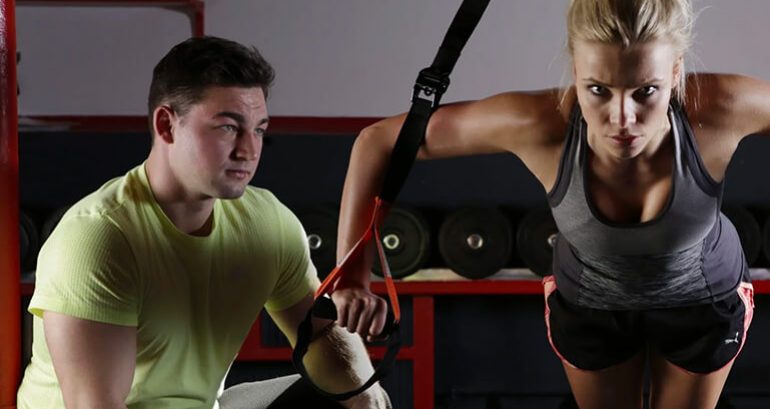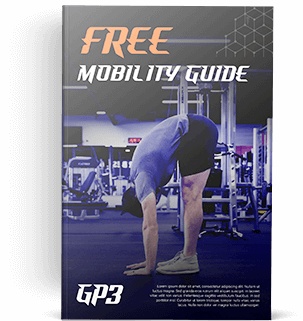Key Points:
1. You should challenge your muscles at their shortest and at their longest.
2. Depending on your goals, you may need more short range or more long range training.
3. Exercise order matters!
Estimated Reading Time: 3-6 Minutes
If you’re trying to become stronger, bigger, or more athletic, does it matter if you do rope pulldowns before skullcrushers, or squats before leg extensions?
The short answer is yes.
Why?
Well, the long answer has to do with an underutilized but vital concept known as short vs. long range training. Basically, this means knowing how to work a muscle when it’s at its shortest and most contracted, and at its longest and most extended. Importantly, when and why you would choose either position has massive implications for both injury prevention and those sweet, sweet gains you’re after.
I’m going to gaze into my imaginary crystal ball for a moment and predict that five to ten years from now, understanding and utilizing the differences between short and long range training will be required knowledge for anyone who wants to be a coach. While this concept has the power to revolutionize training by helping people become much more athletic and much less injury-prone, as of right now, it isn’t particularly well understood.
So, if this is something you’ve never heard of until now, don’t worry. You’re not alone. Despite having played sports at the collegiate level and trained extensively since 2008, this was a concept I’d heard of only recently. And yet, discovering it was one of those instantly crystallizing moments. I knew I’d stumbled upon something important.
If Nobody Knows About This, How Did I Find Out About It?
Unknowingly, I first came across short vs. long range training in late 2019, in a Jeff Cavaliere (ATHLEAN-X) arm video, believe it or not. For the biceps and triceps, he talked about the benefits of manipulating one’s shoulder position in order to put each muscle in either the “maximally contracted” or “maximally extended” position. It turns out that these two phrases are effectively synonyms for “short range” and “long range.”
What he didn’t talk about was why you’d want to utilize one position or the other, and why they’re both so important. Fast forward about a year to discovering Ben Patrick, aka “kneesovertoesguy”, and being blown away by his abilities and athleticism transformation. Through his YouTube channel, I came across content created by his mentor, Keegan Smith, an incredibly impressive athlete and former strength coach in the Australian National Rugby League.
One of the topics Keegan’s presentations mentioned over and over was short and long range training. He talked about the differences between them and the importance of balancing them in your programming. This is vital to understand, because the concept of short and long range training is applicable to every muscle group and even every joint movement, like knee flexion or hip extension. So, let’s dive into these differences and why each method is vital for your training program, whether your goals are athletic, aesthetic, or both.
Okay, So What Exactly are Short and Long Range Training?
First, understand that short range training can also be called “inner range” training, or challenging a muscle in its maximally contracted position. Regardless of the terminology used, the goal is to end the concentric portion of each rep of an exercise with the target muscle in as shortened a position as possible. Think of the triceps during a kickback or the quads when using a leg extension machine. At the end of the rep, there’s nowhere for the muscle to go. It’s flexing as hard as it can, and it can’t get any shorter. Performing lots of short range reps will lead to the “burn” and the “pump” chased by bodybuilders, in addition to a very crampy feeling in the muscle. The hardest part of short range reps tends to be the end or lockout portion.
Long range training can also be called “outer range” training, or challenging a muscle in its maximally extended position. With long range training, the goal is to begin the concentric portion of each rep with the target muscle in as stretched a position as possible. Think of the triceps during skullcrushers or the quads during a reverse Nordic. At the start of each rep, the muscle is being stretched as much as it safely can be. This is why the hardest part of long range reps tends to be the very beginning.
With all of that understood, here’s a handy table to help you with the pros and cons of each
| Short Range | Long Range | |
| Pros |
|
|
| Cons |
|
|
Looking at this table, it might strike you that long range training seems “better” than short range training. In some ways, it is, but this doesn’t mean short range training is useless. Far from it.
Short range training is a fantastic way to prepare the body for the more challenging long range movements, especially when returning from injury. Also, short range training is vital for developing the mind-muscle connection, which is mandatory for getting the most out of long range movements. Take the triceps, for example. If you try to perform heavy skullcrushers despite having a poor mind-muscle connection, you’re more likely to develop elbow tendonitis than big, strong triceps.
Two Concrete Examples of Why Balancing Short & Long Range is Important
Trying long range exercises without the appropriate mind muscle connection is something I’ve certainly been guilty of in the past, and it partially explains why I was often frustrated with arm training when I was younger. Early in my training career, I hadn’t performed enough short range arm movements like spider curls and kickbacks, so my mind-muscle connection with my biceps and triceps was weak. This was partially because I had heard these exercises were less effective for building muscle than exercises like heavy skullcrushers and barbell curls. While that is technically true, what I didn’t know was that without using those “less effective” short range movements to develop the necessary mind-muscle connection, I couldn’t readily activate the muscle fibers I needed when performing the more challenging long range movements.
So, not only did my biceps and triceps not grow very much, my elbows would hurt after training them. Because the muscle fibers weren’t being stimulated, too much of the force from the weights was transferred to the bony structure of my elbow joints. Not fun. This painful reality led me to stop most of my targeted arm training. Now, thanks to my knowledge of short and long range movements, I’m able to safely train arms again. For any muscle I’m trying to grow, I perform 2-3 sets of 20-40 reps of a short range movement followed by 3-5 sets of 8-12 reps of a long range movement. Doing so ensures I’m adequately warmed up, and helps further sharpen the mind-muscle connection.
This is just one example though. And, admittedly, arm training is more about looks than function, so how does this come into play for the purpose of increasing performance? Here’s where I’ll invite you to check out my article about tendon training for a deeper dive into the powerful correlation between long range training and athleticism gains. I will give a quick example, however. If you want to increase your sprint speed, a key exercise to help you do so is the Nordic Hamstring Curl. This is a long range knee flexion movement that puts the hamstrings under an intense stretch in the starting position. Due to said intensity, trying to perform it without developing a great mind muscle connection with short range hamstring curls is a recipe for injury.
How to Apply This to Your Own Training
To wrap up, this is why I believe short vs. long range training will soon be required knowledge. Do you have a stubborn muscle group that just won’t grow? You probably need to utilize short range movements to build a better mind-muscle connection. Then, follow them up with some long range movements to bring about some serious hypertrophy. Were you that athlete who didn’t seem to be able to make many gains in speed or explosiveness despite your strength numbers going up? You probably need some very specific long range movements. But wait! Better make sure these areas have a great mind muscle connection first, so don’t neglect those short range exercises. When you understand this concept, it becomes nearly impossible not to view every exercise you perform through this lens. It’s that important.
Before you go, I’d love to hear from you! Reply to this message and let me know…had you ever heard of short and long range training before reading this article? If so, how have you used it in your own training?

